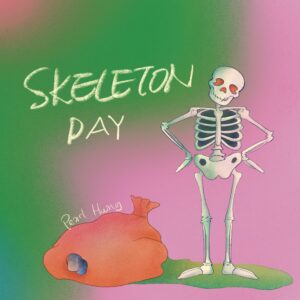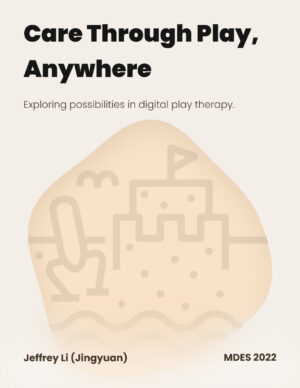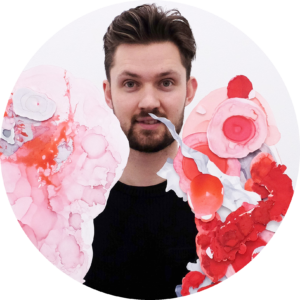HILOS
Andrés Somasco
See it On Campus: Level 2
Visitor InfoHilos started as a general inquiry into humans relationship with technology and how we can stay aware of the ontological effects that it has on our society. Through a series of explorations and research it turned into a data visualization practice that I hope will be the beginning of a new relationship to personal data.


Many of the problems that are occurring in relation to technology are partially due to the collection of data and the ensuing manipulation of its users. People are becoming more aware of the collection of data by big tech companies and how it is being used but there is still a huge percentage of the population that are not aware or do not deem it important. This project addresses this by giving users a reason to collect their data and use it for something constructive. By collecting the data we generate and using it for our own purposes we will develop agency over the information that is encoded and in the process keep it out of others control who would sell it for advertising or political purposes.

<Process>
The Hilos design process uses binary code as its fundamental building block; every piece of data that is stored digitally can be simplified down to a combination of 1’s and 0’s. Images, text and sound can all be reduced to binary code and thus the process can be used to design with any type of digital data.

The woven examples you see here on this website and in the show were created using the binary code of a series on old photographs from my childhood which were transformed into abstract patterns through algorithms created in Grasshopper, a component of the 3D modelling software, Rhino.

We created 2 different algorithms which we used to form the different patterns below and which I used to layout the design for the woven pieces that are the final outcome of this project.




<Weaving>
The materiality of this project manifested as thread because of its ability to express complex visualizations and intricate patterns produced by personal data but the patterns and designs can be used in conjunction with many different materials. All of the final pieces were woven on the TC2 digital loom which is one of the more modern versions of the Jacquard loom. The earliest Jacquard loom was also the first version of digitization and its use in the project is an acknowledgment of this and an attempt to un-digitize personal data as a way of understanding our relationship to it.

During the weaving process I wove conductive thread into the scarves and the tapestry which power LED lights throughout the pieces. The scarves each have 4 LEDs and the tapestry has 6 which are powered by a coin cell battery and lily pad arduino which allows the lights to blink in different sequences. The blinking lights represent the flow of data through the pieces and suggest a future where we can store actual digital data in textiles through the use of nanotechnology.

Circuit diagram showing the conductive thread, positive and negative input and the positions of the LEDs
<Cultural_Symbolism>

The symbolism and general aesthetic of the project is based on symbols that I grew up with from my fathers, and by inheritance, my own culture. The stepped cross to the left is called a guarda pampa, which in Spanish means “to guard the plain”. This symbol was used by the gauchos (Argentina cowboys) who lived on the plains near Santa Fe, where my father grew up, to weave their belts, panchos and other attire. The guarda pampa has always had a presence in my life and for this project symbolizes the importance of traditional and embodied knowledge in a more wholesome path forwards in the development of technology.
The icon for this project (right) is a combination of the guarda pampa and circuit diagram symbols in a style I am coining Argentine Futursim.

A huge thanks to Lousie St. Pierre, Sophie Gaur and Keith Doyle for their guidance through this project as well as Logan Moir for his help creating the algorithms and Jen Hiebert for her endless weaving knowledge. Also, endless gratitude to all my classmates who’s input was crucial in making this project what it is.





